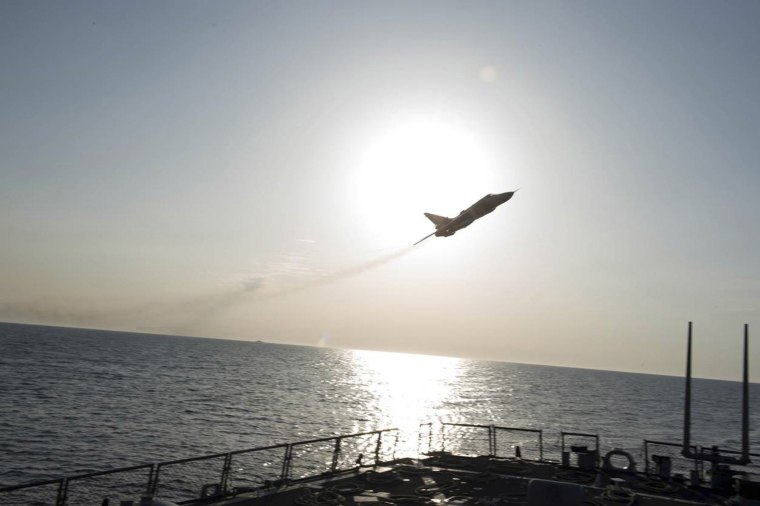MIDDLE EAST– Even as the overall relationship between the U.S.and Russia continues to be contentious and strained, the two nations' militaries are considering bolstering their communications with one another.
The U.S. and Russia have not had official military-to-military relations since early 2015. However, after the Russian military began flying combat missions over Syria last year, the two established a telephone hotline to communicate whereabouts and prevent a mid-air disaster.
In addition to the daily calls between the two militaries to ensure their aircraft stay out of one another’s way. Every week, a U.S. military team in an air operations center in southwest Asia conducts three regularly scheduled calls with the Russian military to work out rules and procedures for operating in the skies over Syria.

One of those scheduled calls occurred Friday morning.
The topic: what to do when Russian military jets are striking at or near U.S. forces on the ground in Syria. And vice versa.
Related: Russian and U.S. Military Aircraft Have Near Weekly Close Calls
The goal of Friday’s call was to establish a procedure to quickly inform the other side who they are attacking so they stop the strikes.
The process is simple: if an American service member operating in Syria comes under attack from a Russian aircraft, he makes an emergency call on the GUARD frequency and uses specific key words to indicate they are striking Americans.
Then the Russians are supposed to acknowledge the transmission and end the attack.
The U.S. and Russia have now practiced this procedure on five separate occasions with all five attempts ending in failure.
A U.S. military official involved in Friday’s call described the most recent test, saying that the American service member tried to raise the Russians on the radio a few times, not using the key phrase, but instead getting on the radio and saying simply, “Ok. Ok. Ok.”
But, despite the fact other aircraft in the area heard the radio calls, the Russian military claimed they did not hear it.
The U.S. military official said it is increasingly clear that the Russians are just using these tests to pinpoint exactly where American ground forces are operating in Syria.
“Every interaction with them is an intel-gathering opportunity for them,” the official said, adding that the Russians are “playing these intelligence games.”
“Things that should be incredibly simple are difficult,” the official said, shrugging his shoulders.
The Air Force general in charge of the airspace over Iraq, Syria, and the region also said there needs to be better communication between the US and Russian militaries.
Lieutenant General Jeff Harrigian described the early planning for the next level of communications between the two militaries as “more than the hotline that we have now.”
“It would go beyond the hotline that we have now, but I think we’d have to work through what exactly that would mean in terms of how much information we would offer them to make sure that as the airspace gets compressed we have a greater ability to work through what could be some challenging situations out in the airspace,” he said.
“I think we need to be clear-eyed that more communication is exactly that, more communication. I can’t stress enough we still have to recognize who we are working with and there’s a trust deficit that we need to be clear-eyed about as we go out the door.”
Harrigian said that most of the Russian military interactions are actually professional and he believes they have no intention of targeting US forces operating in Syria. But, he warns that as the battlespace becomes more condensed, “the chance for miscalculation increases.”
“Probably the area that I’m most concerned about a miscalculation or quite frankly a safety conflict mid air would be the thing that would be the most worrisome to me given how many airplanes are out there and how closely they are operating.”
